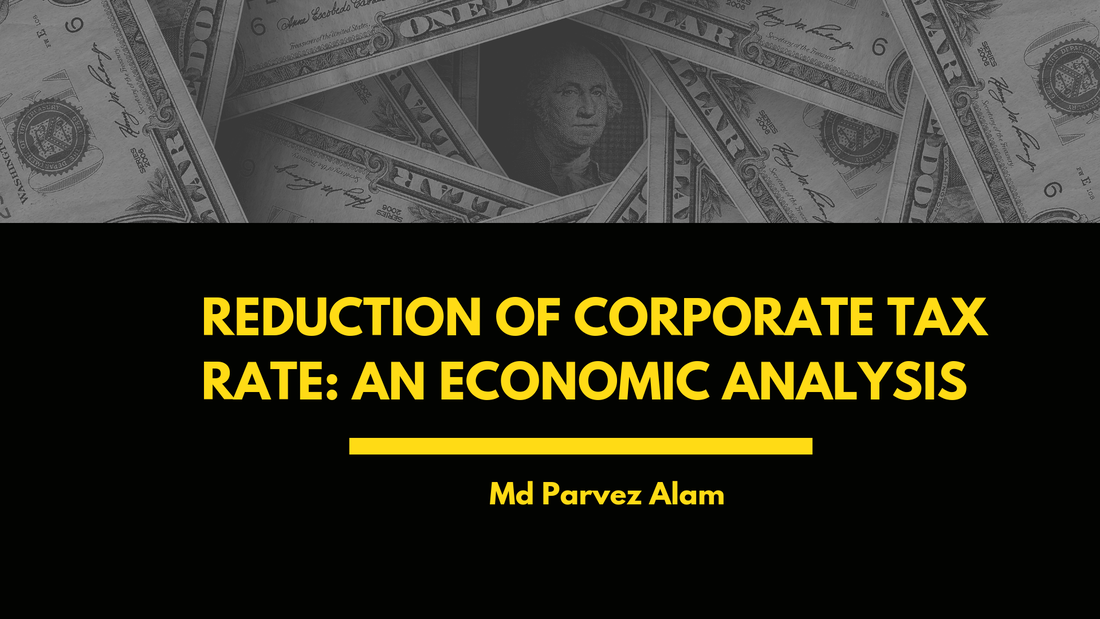ECONOMICS STUDY CENTER, UNIVERSITY OF DHAKA
|
Md Parvez Alam Tax, the prime source of revenue collection for the government, has been playing a great role in supporting country’s development expenditures which substantially improves the infrastructure and facilitates smooth economic growth of the country. The ever increasing demand for development activities of the government has placed the taxation at the top of the list of sources of fund. In total revenue collection of the government, the taxation contributes nearly 90% and rest is contributed by Non -NBR revenue. One of the two big sources of taxation, direct tax, imposed on personal income and corporate profit, holds 30% of the total revenue income and the other one, indirect tax (value added tax), imposed on products and services, also contributes a big portion in the tax revenue which is around 35% and both aggregately contributing 65% of total revenue mobilization of the government. Bangladesh has been charging highest corporate tax which is currently 35% which is the highest in both regional and global level. In the last budget session of FY 18-19, the finance minister slightly lowered the corporate tax rate amounting around 2.5% for bank and financial institution. The recent move of reducing the corporate tax rate from 35% to 20% initiated by US president Donald Trump according to his election manifesto is now one of the most talked issues in the international business arena. The argument behind the dramatic reduction of tax rate is that it would facilitate higher economic growth by increasing investment and creating employment opportunity in the economy. Ronald Regan, who is the believer of supply side economies, took the first ever initiative to reduce the corporate tax rate with the belief that it might encourage production and include unemployed youth in workforce, freeing up more money for corporations to invest which would ultimately stabilize the US economy from recession of late 1980s. However, there are many debates going on regarding the rationality of tax cut and many even believe that it would not result in the proposed outcomes. A recent study, done by William Harden and William Hart, finds that a one percentage point increase in the corporate tax rate would increase unemployment rate by .2%-.5%. A 10-20% reduction in the rate--the range that the Trump Administration has proposed-- would translate into a 2%-10% boost in long-run employment. Some more studies performed by Alexander Ljungqvist and Michael Smolyansky, as well as Harden and Hart suggest that a one percentage point reduction in the corporate income tax would boost income by .3% to .6%. Therefore, the proposal of tax reduction by 10-20% translates to a long-term boost in income by 3%-12%. Researcher, Johannes Voget suggests that the location, where the multinational corporations would be set up is quite sensitive to the corporate tax rate, and that an increase in repatriation of taxes of 10 percentage points boosts the number of firms relocating investment by 2.2%. This clearly states how crucial the corporate tax rate for an economy is.
Edward Kleinbard gave the rebuttal against the above mentioned points by arguing that Hassett, chairman of the White House Council of Economic Advisers, relies heavily on correlations between corporate tax rates and wages in other countries to argue that a cut in the corporate tax rate would boost returns to labor very substantially. Frank Lysy noted that the corporate tax cuts of the late 1980s did not result in increased real wages. Instead, they fell. The same is true in the UK, as highlighted by Kimberly Clausing and Edward Kleinbard If a company is permitted to deduct all its investment costs and then is taxed on all of its investment profits, the tax rate would have no real impact at all on the investment incentive. If investments are financed in part by tax deductible fund, as would be true even under the Trump plan, a reduction in the corporate tax rate could easily reduce the investment incentive. Clausing and Edward Kleinbard found that since 1980, GDP per-capita has grown by 60 percent, whereas median household income has only increased by 16 percent meaning that corporate tax cut didn’t result in promised output. Thus, it may be more difficult in today’s economy for workers to capture productivity gains. Therefore, it supports the claim of advocates of rate cut very little. The tax reform act of Regan administration in 1986 was based on fairness, simplicity, and economic growth but the hard truth is that it didn’t keep its promise. A couple of eminent tax economist, Alan Auerbach at the university of California, Berkley Joel Slmrod at the University of Michigan conclude that the substantial reduction of corporate tax rate deceased the revenue generation capacity of the Regan administration by 9% which further widened the budget deficit and forced to cut the spending to avoid blowing up the deficit. As a part of global economy, an initiative taken by developed countries would surely affect the developing ones. Our respective authority has to respond timely with prudent hands as they have to make a tradeoff between proper economic development and revenue generation form taxation. Meanwhile, it has been alleged by different trade bodies that higher corporate tax rate motivates the corporations not to reveal the actual financial scenario of the firm, thus building the tendency of tax avoidance and evasion and carrying black money in the economy. Furthermore, the prevailing higher corporate tax rate for listed firms also discourages the fundamental firms to come for initial public offering and listing in share market. In order to retain and attract more foreign direct investment and local investment, the lessening of corporate tax rate by 5% to 10% to cope up with at least regional standard, will shrink revenue collection. But this shortfall in revenue collection can be compensated by increasing the collection capacity, building efficient manpower for NBR, installing automation in tax collection, and implementing stringent rules & regulations in tax collection.
0 Comments
Leave a Reply. |
Send your articles to: |




